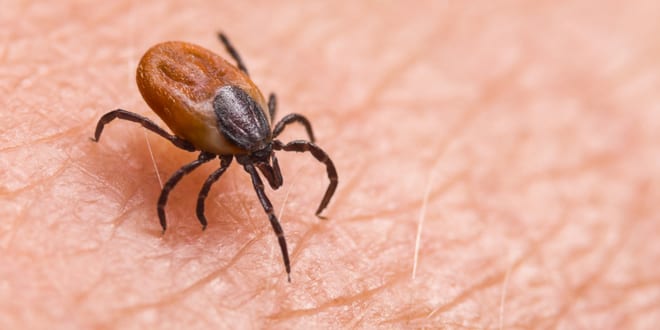As summer heats up across the United States, so does the threat of one of nature’s smallest but most insidious dangers: ticks. Health officials and medical professionals are issuing growing warnings as Lyme disease cases continue to rise, and experts say 2025 could be one of the worst years on record for tick-borne illnesses.
A recent Fox News report highlights the severity of this year’s tick season, with doctors urging the public to recognize early symptoms of Lyme disease—such as fatigue, fever, joint pain, and the telltale bull’s-eye rash—before the condition becomes chronic or life-altering. “If diagnosed early, Lyme disease can be treated effectively,” said Dr. Marc Siegel. “But if it lingers, it can cause serious neurological and cardiac complications.”
The disease is transmitted by the bite of black-legged ticks, also known as deer ticks, which have proliferated in forested and suburban regions. Warmer winters, earlier springs, and increased deer populations have allowed ticks to thrive in areas previously considered low-risk, from the Northeast and Midwest to parts of the South and Pacific Northwest.
But for some, the alarming rise in tick infestations is more than just an epidemiological concern—it’s a spiritual and historical echo of the past. Jewish sources predict that all of the plagues will reappear in the final Redemption but in even more powerful forms. This reload of the Egyptian plagues was prophesied by Micah.
I will show him wondrous deeds As in the days when You sallied forth from the land of Egypt. Micah 7:15
It is also written in Midrash Tanchuma, homiletic teachings collected around the fifth century, that “just as God struck the Egyptians with 10 plagues, so too He will strike the enemies of the Jewish people at the time of the Redemption.”
This concept was explained by Rabbi Bahya ben Asher, a 13th-century Spanish commentator, who wrote, “In Egypt, God used only part of His strength. When the final redemption comes, God will show much, much more of His power.”
In the Book of Exodus, the third of the Ten Plagues that struck ancient Egypt was the plague of kinim, traditionally translated as “lice.” But according to a number of classical Jewish sources, kinim might have referred to a broader category of parasitic vermin, including ticks.
Rabbeinu Chananel, an 11th-century North African sage, identifies kinim as karatzim, a term associated with blood-sucking creatures such as ticks. His interpretation stands apart from the more common reading of lice and instead suggests the plague represented a horrifying outbreak of tiny parasites that infested both man and beast.
Rashi, the famed 11th-century French commentator, describes the plague as involving creatures that emerged from dust and tormented humans and animals by entering their bodies and causing intense irritation. Although he leans toward lice, his vivid description matches the aggressive and invasive nature of modern tick infestations.
Other Jewish commentators leave room for ambiguity. Ibn Ezra and Radak both describe the kinim as small biting insects arising from dust. Rav Saadiah Gaon, writing in Judeo-Arabic in the 10th century, defines kinim broadly as “tiny creeping things,” a term that could easily include ticks or mites.
The Midrash (Shemot Rabbah 10:7) emphasizes the psychological and physical toll of the third plague. Even Pharaoh’s magicians admitted defeat, saying, “This is the finger of God,” when they were unable to replicate the miracle. Why? Because the creatures were too small for human hands—or even dark arts—to produce. This reinforces the idea that the plague involved microscopic or near-microscopic pests, like tick nymphs.
In 2025, the spiritual resonance is hard to miss. Tiny creatures emerging from nature, invading suburban neighborhoods, latching onto humans and animals alike, and causing mysterious, debilitating illness—it’s not hard to imagine the ancient Egyptians recoiling at the same phenomenon.
If Pharaoh’s court once called this affliction “the finger of God,” today’s public health officials call it a public health emergency. Lyme disease alone affects an estimated 476,000 Americans each year, according to the CDC, and that number is climbing. Other tick-borne diseases—like anaplasmosis, babesiosis, and the deadly Powassan virus—are spreading as well.
Doctors recommend avoiding tall grass and wooded areas, wearing long sleeves and pants when hiking, using EPA-registered insect repellents, and checking oneself and pets for ticks after being outdoors.
But perhaps there is also room for spiritual introspection. The Ten Plagues in Egypt were not merely punishments but calls to awareness and repentance. In a modern context, the tick plague could be interpreted as a wake-up call—not only to protect our bodies, but to reflect on our environmental stewardship, our moral condition, and our relationship to the natural world.
As one rabbi commented half-jokingly, “The U.S. isn’t just entering tick season—we might be entering the Third Plague.”
Whether divine message or biological inevitability, the lesson may be the same: small things matter. And if we ignore the creeping dangers at our feet, they may soon be crawling all over us.




